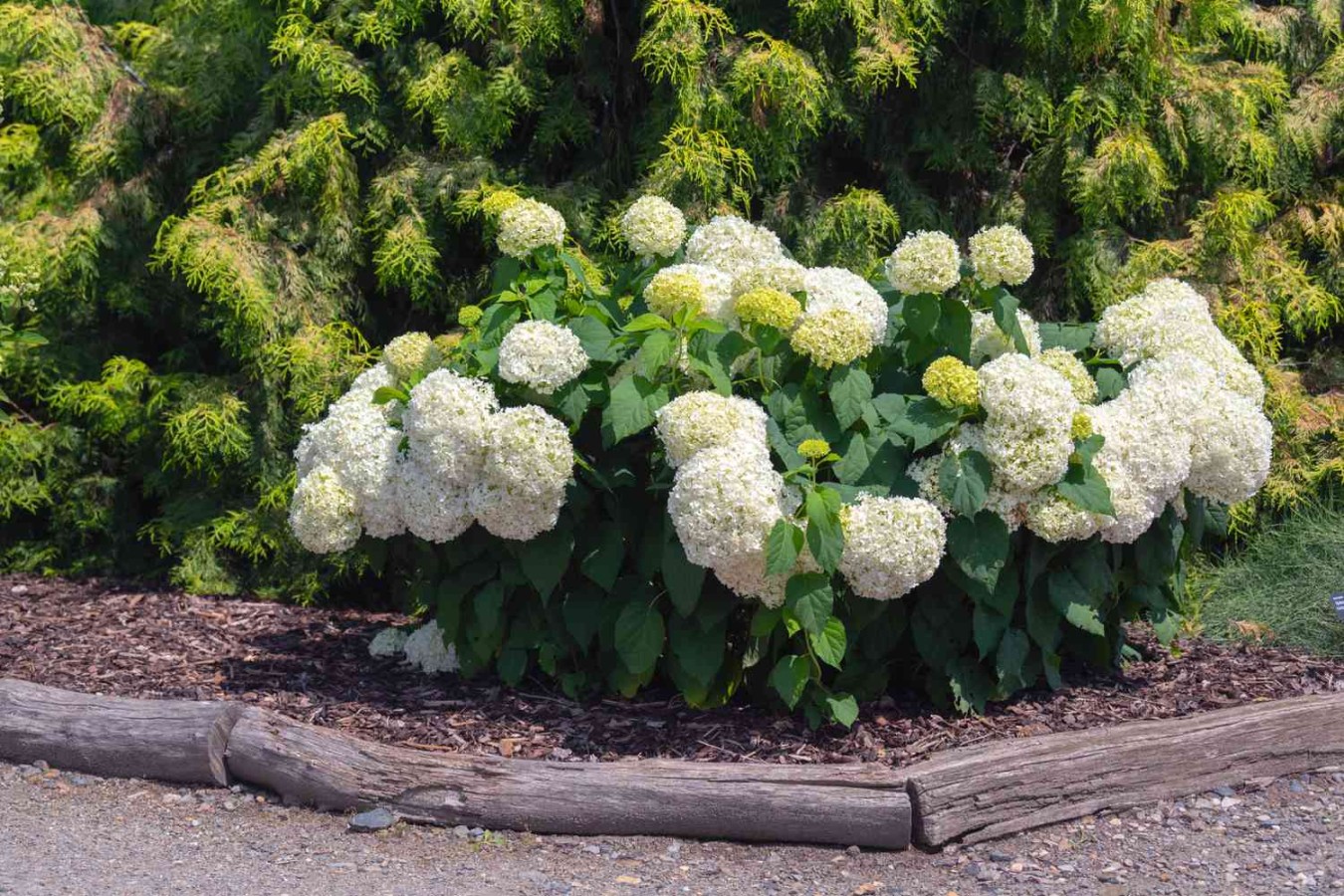
Image Source: thespruce.com
Annabelle Hydrangea Plant: The Ultimate Guide
Introduction
Annabelle Hydrangea plants are a popular choice for gardeners looking to add a touch of elegance and beauty to their outdoor spaces. These stunning plants are known for their large, fluffy white blooms that can brighten up any garden or landscape.
History of Annabelle Hydrangeas
The Annabelle Hydrangea plant is a cultivar of the Hydrangea arborescens species. It was first discovered in the wild in North America and has since become a favorite among gardeners worldwide. The plant was officially named ‘Annabelle’ in honor of the woman who first discovered it.
Characteristics of Annabelle Hydrangeas
Annabelle Hydrangeas are known for their large, round blooms that can reach up to 12 inches in diameter. The Flowers start off as a light green color before turning to a bright white as they mature. The plant itself can grow up to 5 feet tall and wide, making it a great choice for filling in large spaces in the garden.
Planting Annabelle Hydrangeas
When planting Annabelle Hydrangeas, it is important to choose a location that receives partial shade. These plants prefer moist, well-Draining soil and should be watered regularly, especially during hot summer months. It is also important to space the plants about 3-4 feet apart to allow for proper air circulation.
Care and Maintenance
Annabelle Hydrangeas are relatively low maintenance plants, but there are a few things to keep in mind to ensure they thrive. Regular watering is key, especially during dry periods. It is also important to fertilize the plants in the spring with a slow-release fertilizer to encourage healthy growth. Pruning can be done in the late winter or early spring to remove any dead or damaged branches.
Common Pests and Diseases
While Annabelle Hydrangeas are relatively resistant to pests and diseases, they can still fall victim to a few common problems. Aphids and spider mites are the most common pests that may affect these plants, while powdery mildew and leaf sPot are common fungal diseases to watch out for. Regular inspection of the plants can help catch any issues early on.
Uses in the Garden
Annabelle Hydrangeas are versaTile plants that can be used in a variety of ways in the garden. They make excellent border plants, as well as focal points in flower Beds or containers. The large blooms also make great cut flowers for bouquets and arrangements.
Propagation
Propagation of Annabelle Hydrangeas can be done through both division and cuttings. Division is best done in the spring or fall, while cuttings can be taken in the summer. Both methods are relatively easy and can help you expand your collection of these beautiful plants.
Companion Planting
Annabelle Hydrangeas pair well with a variety of other plants in the garden. Some great companion plants include hostas, ferns, and astilbe, which all thrive in similar growing conditions. The white blooms of the Annabelle Hydrangea also provide a nice contrast to the green foliage of many other plants.
Seasonal Care
In the spring, it is important to fertilize Annabelle Hydrangeas with a balanced fertilizer to encourage healthy growth and blooming. During the summer, regular watering is key to keep the plants thriving. In the fall, you can prune the plants to remove any dead or damaged branches before winter sets in.
Winter Care
Annabelle Hydrangeas are relatively hardy plants, but they can benefit from a little extra care in the winter months. Mulching around the base of the plants can help protect the roots from freezing temperatures. You can also wrap the plants in burlap to protect them from harsh winter winds.
FAQs
1. How often should I water my Annabelle Hydrangea plant?
It is best to water your Annabelle Hydrangea plant regularly, especially during hot summer months. The soil should be kept consistently moist but not waterlogged.
2. How tall do Annabelle Hydrangeas grow?
Annabelle Hydrangeas can grow up to 5 feet tall and wide, making them a great choice for filling in large spaces in the garden.
3. When is the best time to prune Annabelle Hydrangeas?
Pruning of Annabelle Hydrangeas can be done in the late winter or early spring to remove any dead or damaged branches and encourage healthy growth.
4. How do I prevent pests and diseases on my Annabelle Hydrangea plant?
Regular inspection of your Annabelle Hydrangea plant can help catch any pest or disease issues early on. Keeping the plants well-watered and properly fertilized can also help prevent problems.
Conclusion
In conclusion, Annabelle Hydrangeas are a beautiful and versatile plant that can add a touch of elegance to any garden or landscape. With proper care and maintenance, these plants can thrive and provide stunning blooms year after year. Whether used as border plants, focal points, or cut flowers, Annabelle Hydrangeas are sure to impress any gardener. So why wait? Add some Annabelle Hydrangeas to your garden today and enjoy the beauty they bring.
Annabelle Hydrangea Plant